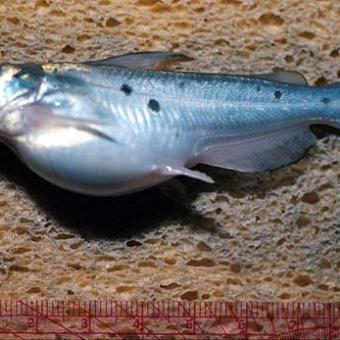|
Channel Catfish Virus affects catfish mainly in America, but has also been detected in Russia and Honduras. It is an ictalurid herpesvirus and a member of the Alloherpesviridae family. Outbreaks are usually seen in warmer weather and affect small fish, usually under a year old. The virus is seen usually seen in farmed fish; transfer can be either horizontal or vertical. Some signs of the disease are disorientation (corkscrew spiral swimming), abdominal distension, exopthalmos, and hemorrhages on the body. Internally there is a yellowish liquid followed by necrosis of all the organs. There is no treatment and infection usually ends in mortality of the fish. CCV is very species-specific and does not affect humans. |
|
Distribution:
Hosts: Ictalurid fishes
Widespread
|
|
Detection Method:
cell culture - channel catfish ovary, gross pathology / gross clinical signs Target tissue:
kidney - tubules and interstitial tissues |








